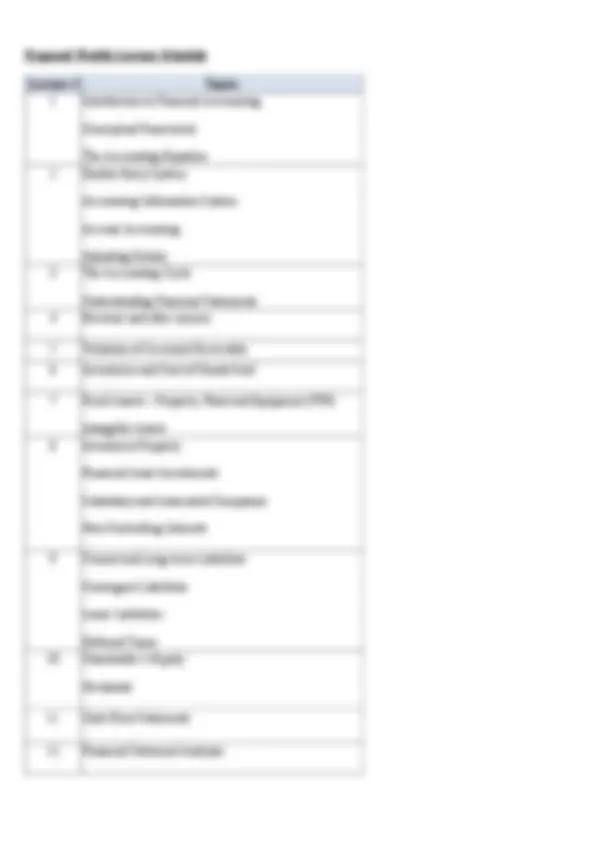



Study with the several resources on Docsity

Earn points by helping other students or get them with a premium plan


Prepare for your exams
Study with the several resources on Docsity

Earn points to download
Earn points by helping other students or get them with a premium plan
Community
Ask the community for help and clear up your study doubts
Discover the best universities in your country according to Docsity users
Free resources
Download our free guides on studying techniques, anxiety management strategies, and thesis advice from Docsity tutors
Information about a financial accounting course offered by nanyang business school at nanyang technological university. The course aims to introduce students to accounting concepts and the preparation of financial statements. It covers topics such as the accounting equation, double entry system, accrual accounting, and the accounting cycle. Students will learn to prepare financial statements and understand the business implications of financial statement information. Assessment includes class participation, team presentations, individual assignments, lams activities, and a final examination.
What you will learn
Typology: Exams
1 / 3

This page cannot be seen from the preview
Don't miss anything!


Course Code AD1101/AD Course Title Financial Accounting Pre-requisites Nil No of AUs AD1101-4AU; AD1102-3AU Contact Hours 3-hour seminar session x 12 sessions
Course Aims This course aims to provide you with the necessary introductory accounting knowledge to understand how to use financial statement information to make economic decisions from a user perspective such as investors and creditors. In the process, you will learn to prepare a basic set of financial statements in accordance with the Singapore Financial Reporting Standards.
The course also examines the impact of various accounting choices on the financial statements and the incentives that contracts based on accounting numbers can create for different stakeholders. This will help you understand why managers choose certain accounting methods and avoid others. This learning forms the foundation for further studies in areas which require accounting knowledge.
Intended Learning Outcomes (ILO)
Upon successful completion of this course, you should be able to:
LO1. Explain the fundamental concept of accounting including the accounting equation, the double entry system and accrual accounting. LO2. Describe different elements of the financial statements i.e. income, expense, assets, liabilities and equity. LO3. Explain the importance of each element of the financial statement to an entity’s business. LO4. Explain the importance of cash in an entity’s business operations. LO5. Prepare a simple set of financial statements. LO6. Describe the business implications of financial statement information. LO7. Identify relevant business / accounting issues and recommend appropriate solutions to the issues identified. LO8. Communicate relevant financial information, both in writing and verbally, in an effective and efficient manner.
Course Content
Introduction to Financial Accounting Conceptual Framework The Accounting Equation Double Entry System Accounting Information System Accrual Accounting Adjusting Entries The Accounting Cycle Preparation of Financial Statements Revenue and other income Valuation of Accounts Receivable Inventories and Cost of Goods Sold Property, Plant and Equipment (PPE) Intangible Assets
Investment Property Financial Asset Investments Subsidiary and Associated Companies Non-Controlling Interests Current and Long-term Liabilities Contingent Liabilities Lease Liabilities Deferred Taxes Shareholder’s Equity Dividends Cash Flow Statements Financial Statement Analysis
Assessment (includes both continuous and summative assessment)
Component % Team/Individual 1 Class participation 15 Individual 2 Team presentation 15 Team / Individual
Every team member must present and will be assessed (i) individually for their presentation skills, and (ii) as a team for the content in their team’s powerpoint presentation slides 3 Practice assignment questions
10 Individual
4 Learning assessment assignment
5 Individual
5 LAMS activities 5 Individual 6 Final examination 50 Individual Total 100